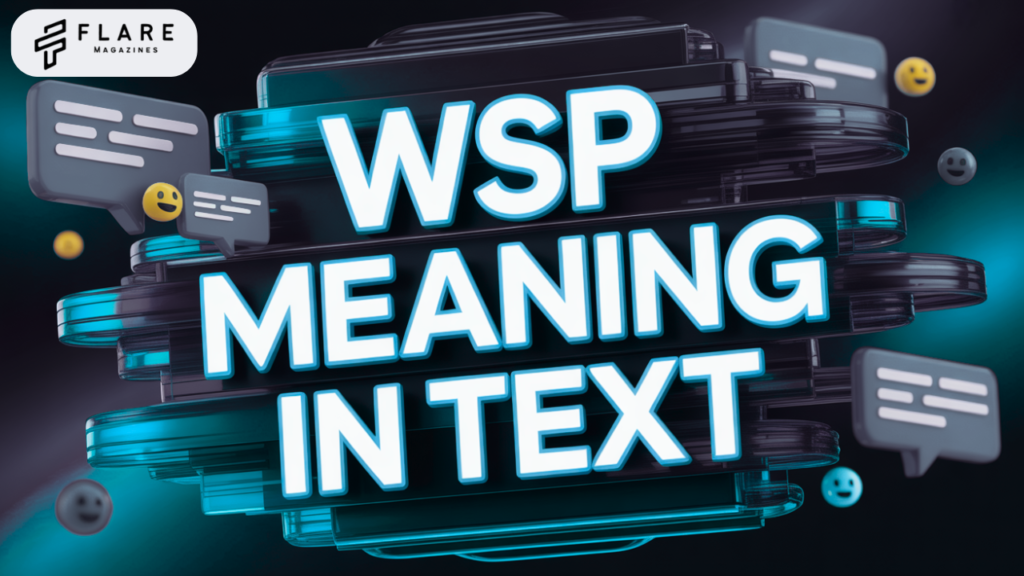Ever received a message saying “WSP” and wondered what it means? You’re not alone! In the fast-paced world of texting and online slang, abbreviations like WSP are everywhere. Short for “What’s up?”, this casual greeting is commonly used in chats, social media, and gaming. Whether you’re texting friends or scrolling through comments, understanding these slang terms keeps you in the loop. Let’s break down WSP, its variations, and how to use it like a pro
From “Sup?” to WSP
WSP doesn’t exist in a vacuum. It’s the direct textual descendant of the casual spoken greeting “What’s up?” This phrase itself is a contraction and informalization of older greetings like “What is up?” or “What is going on?” “What’s up?” gained immense popularity, particularly in American English, throughout the late 20th century, evolving into the ubiquitous “Sup?” – a single-syllable acknowledgment and inquiry rolled into one. The migration of this greeting into digital spaces was inevitable. Typing out “What’s up?” felt cumbersome compared to the speed demanded by early chat rooms and SMS with character limits. Abbreviation was a necessity. “Wassup?” (popularized culturally by a famous Budweiser ad campaign) served as a bridge, but true efficiency demanded letters only. Thus, WSP emerged as the dominant textual shorthand: W (What) ‘S (‘s) P (up). It perfectly captures the phonetic essence of the spoken phrase in minimal keystrokes, adhering to the core principle of text-based efficiency. This evolution highlights a key process in digital linguistics: the compression of spoken informal language into optimized written forms.
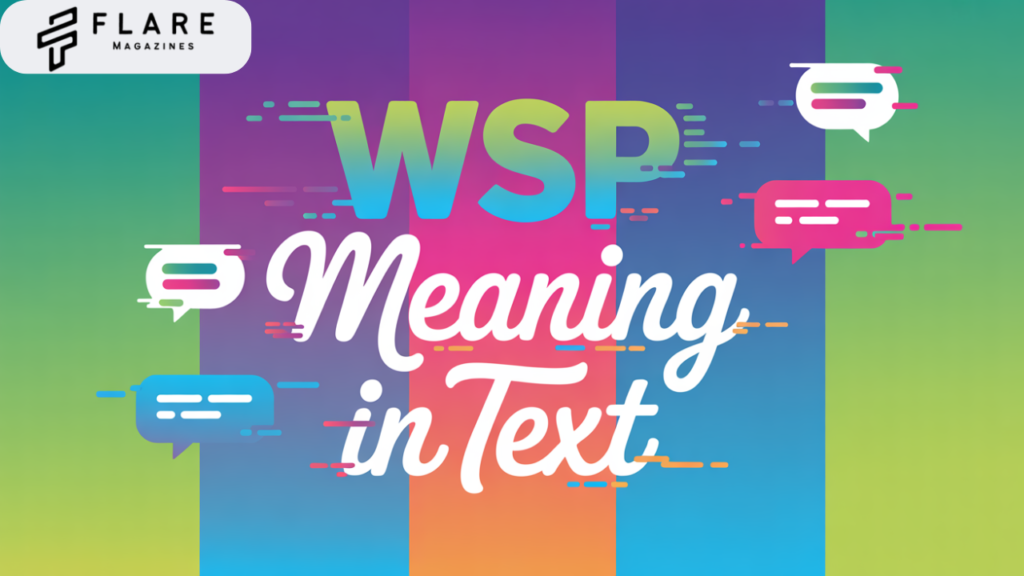
Core Meaning and Primary Function: The Digital Check-In
At its most fundamental level, WSP serves as a casual, friendly greeting and a check-in. It’s the digital equivalent of nodding at someone when you enter a room or saying “Hey, how’s it going?” in passing. Its primary functions are:
- Initiating Contact: Opening a conversation, signaling your presence, or showing you’re thinking of the recipient.
- Expressing Casual Interest: Asking about the other person’s current state, activities, or well-being, albeit in a very general and non-intrusive way.
- Maintaining Connection: A low-effort way to keep communication lines open, often used between friends or acquaintances who communicate frequently.
Unlike more formal greetings (“Hello,” “Good morning”), WSP carries an inherent expectation of informality and often brevity in response. It’s rarely used in highly professional contexts or with people you don’t know well, unless aiming for a specific, deliberately casual tone. The response to WSP is typically equally casual: “nm” (not much), “chillin,” “wyd,” or simply returning the “WSP?” It establishes a relaxed conversational baseline.
The Nuances of Tone and Context: Beyond the Literal
While “What’s up?” is the literal translation, the tone conveyed by WSP can shift dramatically based on context, relationship, and even platform:
- Pure Casualness: Between close friends, it’s a standard, neutral opener with no deeper implication.
- Checking In: If sent after a period of silence, it might carry slightly more weight, implying “Haven’t heard from you, everything okay?” or “Just thinking about you.”
- Prompting a Response: In an ongoing conversation that has lulled, a “WSP?” can nudge the other person to re-engage.
- Subtle Urgency (Sometimes): Paired with other cues (like multiple messages or a “?” alone), it might convey mild impatience or a need for a quicker reply, though this is subtle and highly dependent on the relationship dynamics.
- Platform Specificity: WSP is most at home in SMS/texting and direct messaging apps (WhatsApp, iMessage, Facebook Messenger, Instagram DMs, Snapchat). It feels slightly less native in very formal professional emails or lengthy forum posts, though it might appear in informal internal team chats. Seeing “WSP” in an email subject line would be highly unusual and likely perceived as overly familiar or unprofessional in most settings.
The relationship between the sender and receiver is paramount. A “WSP” from a close friend feels warm and expected; the same message from a distant acquaintance might feel slightly abrupt or overly familiar. From a boss to an employee, it could signal an attempt at a casual rapport, but might also land awkwardly depending on the existing workplace culture
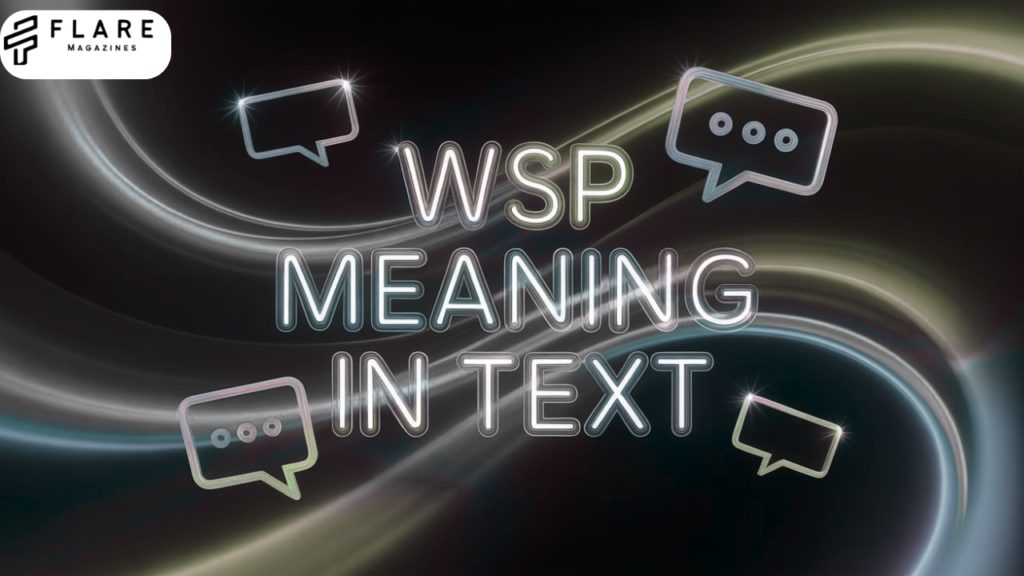
Variations and Cousins: The WSP Extended Family
WSP isn’t monolithic. Several variations exist, adding subtle shades of meaning or reflecting different typing habits:
- “Wsp” (Lowercase): The most common form, emphasizing extreme casualness. The lack of capitalization mirrors relaxed speech.
- “WSP” (Uppercase): Less common. Can sometimes imply slight emphasis, perhaps mimicking excitement (“HEY! WHAT’S UP?”) or, rarely, frustration if the context suggests it (“WSP??” after being ignored). Mostly, it’s just stylistic.
- “Wsp?” (With Question Mark): Explicitly frames it as a direct question, making the inquiry aspect slightly more pronounced than the pure greeting aspect. The most common punctuation pairing.
- “Wsp.” (With Period): Less common. Can feel slightly more blunt, final, or less inviting of a lengthy response than the question mark version. Might imply “Just checking in briefly.”
- “Wsp??” (Multiple Question Marks): Often conveys eagerness, excitement, or mild impatience for a response.
- “Wsp bro/sis/girl/etc.”: Adding a term of endearment or familiarity personalizes the greeting and reinforces the casual bond.
- “Wsp with you/with u”: A slightly more explicit phrasing of the question, less common than the standalone “Wsp.”
WSP also exists within a broader ecosystem of greeting/inquiry slang:
- “Wyd” (What You Doing?): More specifically focuses on current activity. Often used interchangeably with WSP, but Wyd feels slightly more action-oriented.
- “Sup” / “Wassup”: The direct phonetic predecessors, still used, especially “Sup.”
- “Hey,” “Hi,” “Yo”: Simple greetings without the inherent “how are you/status check” that WSP implies.
- “How r u?” / “Hru”: More directly focused on well-being than the general status check of WSP.
The choice between WSP, Wyd, Sup, or a simple “Hey” often comes down to personal preference, momentary intent, and established communication patterns within a relationship.
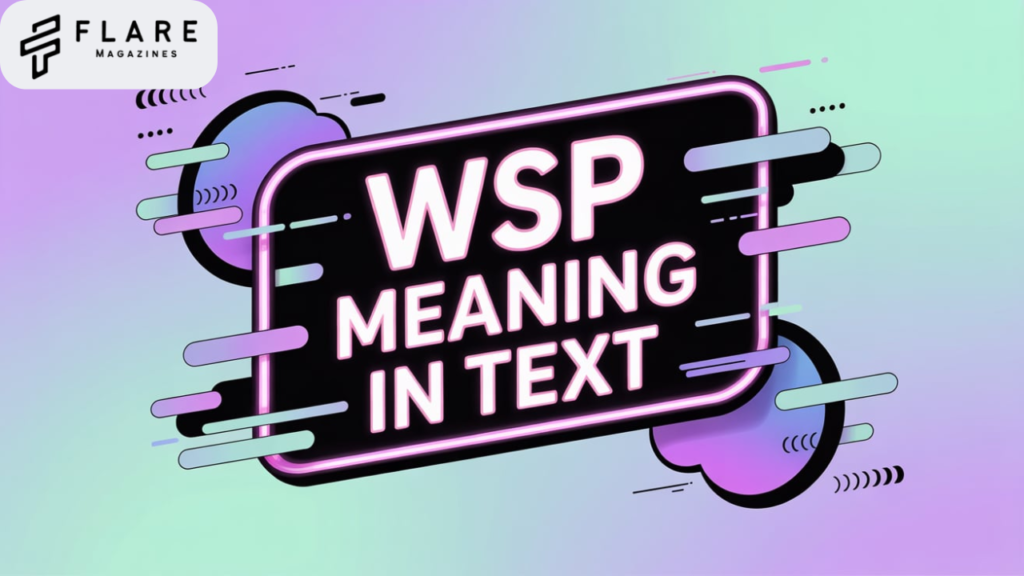
The Evolution and Generational Adoption
WSP rose to prominence alongside the explosion of SMS texting and early instant messaging (AIM, MSN Messenger) in the late 1990s and early 2000s. Character limits (originally 160 characters per SMS) and the clunkiness of early phone keyboards made abbreviations like WSP not just convenient but essential. Millennials, who came of age during this technological shift, were the primary drivers and adopters of this early text slang lexicon. However, WSP has demonstrated remarkable staying power. While Gen Z has undoubtedly introduced a vast array of new slang (often originating from social media platforms like TikTok or Twitch), WSP remains firmly entrenched in the common vernacular. It’s a foundational piece of digital communication, understood across younger generations and even by many older digital natives. Its simplicity and direct connection to the universally understood “What’s up?” have granted it longevity that many more niche abbreviations lack. It’s less of a trendy “slang of the moment” and more of a standardized digital communication tool.
Cultural Impact and Permanence: A Lingua Franca of the Digital Age
WSP’s significance extends beyond mere convenience. It represents a democratization and informalization of communication facilitated by digital technology. It allows for quick, low-stakes social connection maintenance. In a world saturated with information and interaction, the efficiency of WSP is its strength. It reflects how digital communication has created its own linguistic norms, distinct from formal writing and even casual speech, blending efficiency with a specific kind of social signaling. Its permanence lies in its perfect fit for its purpose: a universally recognizable, ultra-casual, and efficient digital greeting/check-in. It has transcended its origins as pure abbreviation to become a cultural signifier of informal online interaction. You’d be hard-pressed to find someone under 50 (and many over) engaged in regular texting who doesn’t recognize WSP.
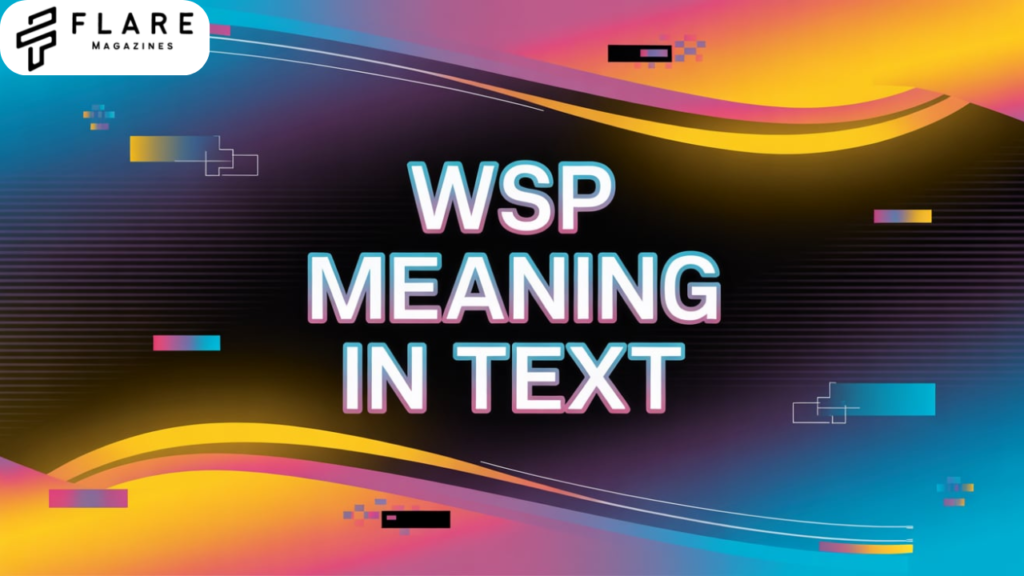
How to Use WSP Effectively: Best Practices
Understanding WSP is one thing; using it effectively is another. Key considerations:
- Know Your Audience: Reserve WSP for friends, family, close colleagues (where appropriate), and people you have an established casual rapport with. Avoid it with superiors (unless they initiate that tone), clients, or people you don’t know well.
- Match the Platform: It’s ideal for texting, DMs, and casual chat apps. Avoid it in formal emails, professional documents, or most social media comments (unless replying directly to a friend within a thread).
- Consider the Context:
- Opener: “Wsp?” (Perfectly standard).
- Mid-convo Check-in: “So, wsp now?” (After initial plans were discussed).
- After Silence: “Hey, wsp? Haven’t heard from you in a bit.” (Adds a gentle nudge).
- Mind the Punctuation: “Wsp?” is generally the safest and most neutral. “Wsp.” can feel curt. “Wsp??” implies eagerness/impatience – use sparingly and only with close contacts where that tone is understood.
- Don’t Expect Deep Answers: WSP invites a brief, casual response (“nm u?”, “just finished work”, “chillin”). If you want a detailed update, ask a more specific question.
- It’s Reciprocal: Be prepared to answer the question briefly if the other person throws it back (“Wsp with u?”).
Potential for Misinterpretation and Ambiguity
Like all text-based communication devoid of vocal tone and body language, WSP carries some inherent risk of misinterpretation:
- Bluntness: Can sometimes be perceived as overly blunt or lacking warmth, especially if the recipient is expecting more effort or is in a sensitive mood.
- Lack of Sincerity: If used excessively or generically without follow-up, it can feel like an automatic, insincere gesture rather than genuine interest.
- Impatience: “Wsp?” sent repeatedly or after a very short time can easily be read as impatient or demanding.
- Ambiguity of Intent: Is it just a greeting? A check-in? A prompt because the conversation died? The sender’s specific intent isn’t always crystal clear without additional context.
These risks highlight the importance of considering the recipient, the existing relationship context, and potentially adding a few more words if clarity or warmth is a priority (“Hey wsp? How’s your day going?”).

WSP vs. The World: A Comparative Lens
Comparing WSP to other common greetings underscores its specific niche:
- WSP vs. “Hello”: “Hello” is universally formal/neutral. WSP is universally casual. “Hello” carries no inherent inquiry; WSP does.
- WSP vs. “Hi”: “Hi” is casual but neutral, just a greeting. WSP is a greeting and a status inquiry rolled into one.
- WSP vs. “Wyd”: Both are casual inquiries. Wyd is specifically activity-focused (“What are your hands doing?”). WSP is more general (“What’s your current state/existence?”). Responses can overlap significantly (“chillin” works for both).
- WSP vs. “How are you?” (or “Hru”): “How are you?” focuses directly on emotional state or well-being. WSP asks about state/status, which can include well-being but is broader and often more superficial. “Hru” is the abbreviated cousin of “How are you?” and sits closer to that meaning than WSP does.
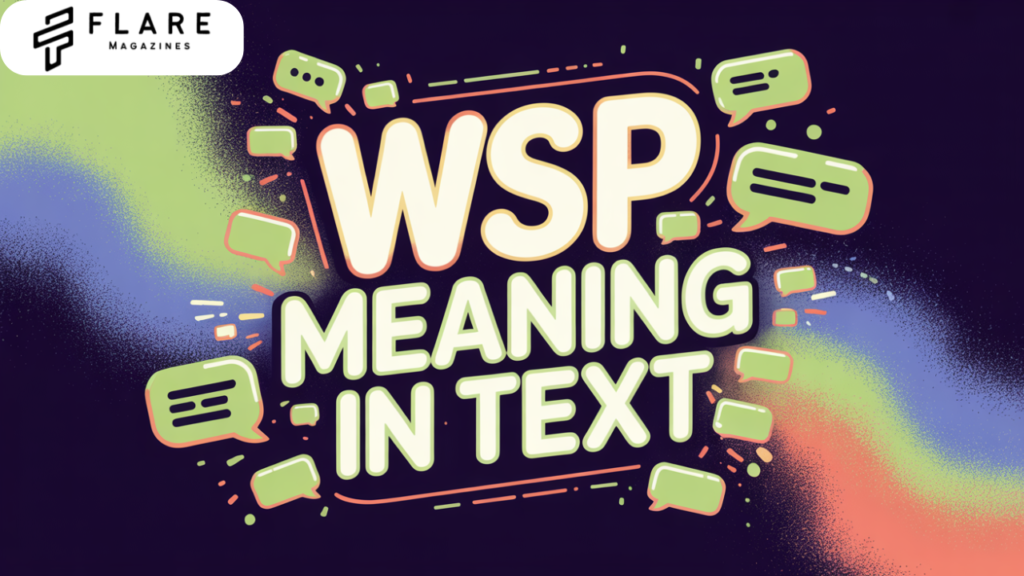
Conclusion: The Enduring Utility of Three Letters
WSP is far more than just shorthand for “What’s up?”. It is a linguistic artifact born from the constraints and opportunities of digital communication. It embodies the drive for efficiency and speed that defines texting culture. It serves as a fundamental social tool for initiating contact, maintaining casual connections, and performing quick interpersonal check-ins within established relationships. Its variations offer subtle tonal shifts, and its usage requires an understanding of context, platform, and relationship dynamics to avoid misinterpretation. While newer slang constantly emerges, WSP’s connection to a universally understood phrase and its perfect fit for its purpose – a casual, efficient digital greeting/inquiry – have cemented its place as a durable staple of the online and texting lexicon. It is a small but powerful testament to how human communication adapts and evolves within technological frameworks, creating new norms that become second nature to millions. The next time you see or type “Wsp?”, remember you’re participating in a well-established, efficient, and culturally significant piece of the digital language puzzle.
FAQs
1. What does WSP mean in text?
WSP is a casual slang abbreviation for “What’s up?”, commonly used in texting, social media, and online chats. It’s a quick way to ask how someone is doing or start a conversation.
2. How should I respond to “WSP”?
You can reply just like you would to “What’s up?”—with a short update or greeting. Examples:
- “Nm, just chilling. WSP with you?”
- “Hey! All good, hbu?”
3. What does WSP stand for on Snapchat?
On Snapchat, WSP means the same thing—“What’s up?”—but it’s often used in streaks or quick chats. Teens and young adults frequently use it to keep conversations casual and fast-paced.
4. What’s a good reply to WSP in a chat?
Keep it informal! Try:
- “Not much, you?”
- “Just busy with work, wsp?”
- A funny GIF or emoji (e.g., 🎉 or 😎).
5. What does it mean if a girl sends “WSP”?
It’s usually just a friendly way to say “What’s up?”—no hidden meaning. Context matters, though! If she’s flirty or uses emojis (like 😊), she might be hinting she wants to talk.
6. Does WSP have a meaning in business?
Rarely. In professional settings, WSP could stand for “Wireless Service Provider” or “Water Safety Plan”, but it’s not used as slang. Stick to full phrases like “How are you?” in work emails.

